
|   |

|   |
Ancient innovation - Priya Narayan e-mail: priyadnarayan@gmail.com May 5, 2019 Karana is defined by Bharata as the perfect combination of the hands and feet - Hasta-pada samyoga Nrttasya Karanam bhavet (NS.4.30) 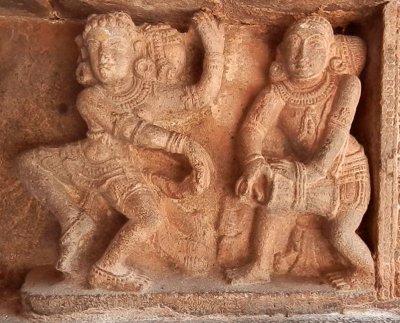 Karanas
The flick of the wrist, the bend of the waist and the glance of the eye bring ancient sculptures to life in Ashwini Srivatsan's 'Decoding Indian Dance.' Margi or Desi, what makes one different? What are they? What do they mean, where do they come from? These are just some of the things that are explained. Since the renaissance of classical dance traditions of India, research is dedicated to uncovering the origins. Notably, Dr. Padma Subrahmanyam has uncovered and deciphered temple sculptures and reintroduced the karanas to the world. Her disciples continue her work and today we see this work on display here in the Bay Area. Ashwini Srivatsan is the student of Sundari Santhanam, one of the senior most disciples of Padma Subrahmanyam. Sundari Santhanam's greatest contribution is the book Neo Desi Karanas which goes in-depth into the regionalized movements as derived from the Natya Shastra. Padma Subrahmanyam is a name that is synonymous with karanas. Her work not only resulted in her doctorate, but also into a movement collection breathing life into the karanas. Padma Subrahmanyam has studied Margi karanas, the movement as depicted by the temple sculptures and detailed by Chapter 4 of the Natya Shastra. Margi karanas are considered the universal language of movement. Desi karanas, unlike Margi represent the regionalized karana movements. It is the regional application of karanas. Sundari Santhanam has revealed 76 Desi karanas adding on to Sarangadeva's Sangita Ratnakara's 32. There are now 108 identified Desi karanas deciphered from temples in Karnataka. Sundari Santhanam has done the work of putting together the 3 elements, stana, chari, nritta hasta and created Sanskrit shlokas to describe them. This is extensive work, and it brings out regionalized movements that were frozen in time. Ashwini brings the karanas to life in the Bay Area. By attending this lecture demonstration, students and audiences got a taste of the vast movement collection that is delivered with the karanas. Interested students can take advantage of the Bharata Nrithyam lessons Ashwini provides at her school, Kanha School of Dance. This lec-dem serves as an introduction to an in-depth application and performance of Chapter Four of the Natya Shastra, 'Unravelling Chapter 4', a performance of Margi and Desi karanas. Keeping in mind the knowledge base, this is a great start to the in-depth immersion into the karanas. When watching the karanas, practitioners of Indian classical dances are able to recognize the main elements of their own practices. It is believed that the classical dances are regionalized versions of the original work as described by Bharata Muni in the Natya Shastra. Today's movements are directly correlated to the karanas. To prove this point, Ashwini demonstrated one karana and explained which classical dances can be visualized in that karana. The beauty behind the karanas is it can be tied to each one of the classical dances. The inclusion of karanas into classical dance really open up the possibility of movements, expanding the movement vocabulary when many times, we are constantly searching for something new and innovative. 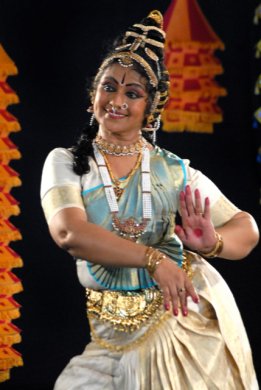 Sundari Santhanam 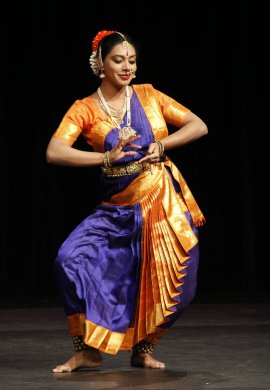 Gowri Kashyap 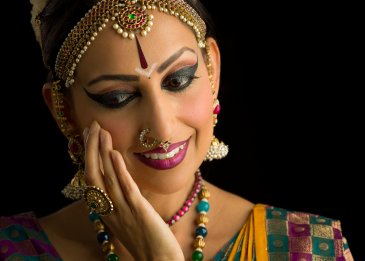 Ashwini Srivatsan 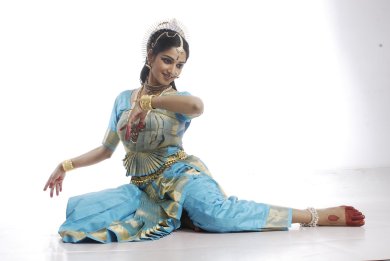 Harini Santhanam Why is the Natya Shastra relevant today when it celebrates evolution? Why is the study of karanas important? Current practitioners look to find aspects to differentiate and delineate by bani, style, guru, and movement vocabulary. The karanas tie them and connect them together. Many are mixing styles and some are unaware of the foundations. Innovation is good, dance is intended to evolve. Current practitioners of Indian classical dances attempt to innovate however lose sight of the foundation. Dance from all parts of the world is in a constant state of evolution. While the karanas are a representation of the ancient, it is also an expression of dance and its evolution and can be utilized in innovation. Ashwini Srivatsan, Gowri Kashyap, alongside Harini Santhanam, daughter of Late Guru Sundari Santhanam, all senior disciples of Sundari Santhanam, bring the upcoming production of 'Unraveling Chapter 4' to present a live performance of the karanas on May 17, 2019. The Natya Shastra has 36 chapters, the fourth chapter focusing on karanas. Temple structures once frozen in time will come to life through the movements of these artists, and hope to encourage innovation and the connection to the ancient. It will bear witness to what dance was once like when it was created for the gods. "To be innovative is imperative for traditions to renew, but inventiveness needs to happen within the framework of basic principles defining each dance." - Kapila Vatsayan References: Natyashastra" (PDF). Sanskrit Documents Jafa, N. (2019, April 18). Indian Dance through the eyes of a Yogini - Kapila Vatsyayan Priya Narayan is a performing arts professional and former artistic director of Kalapriya Center for Indian Performing Arts in Chicago. She is a Ph.D. Scholar at Reva University Bangalore. |